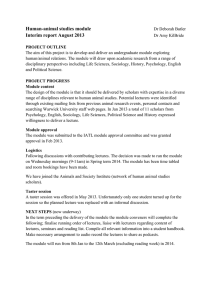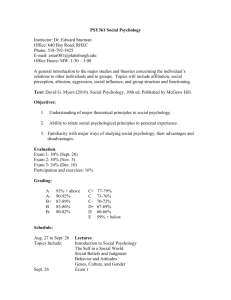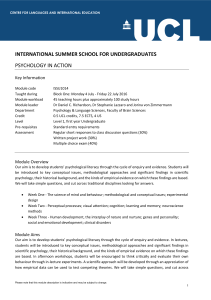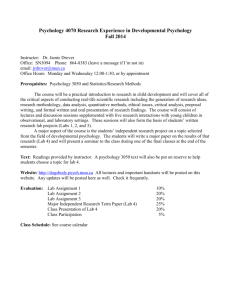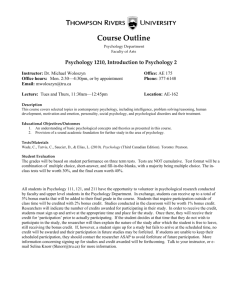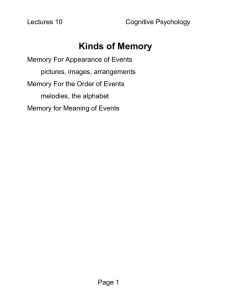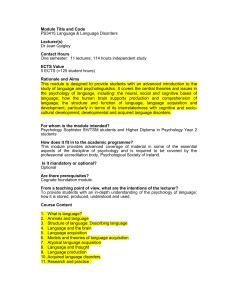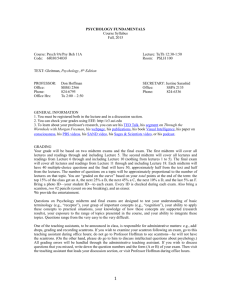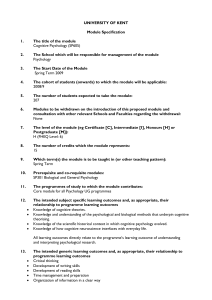Flipping the Classroom in Psychology Research Methods
advertisement
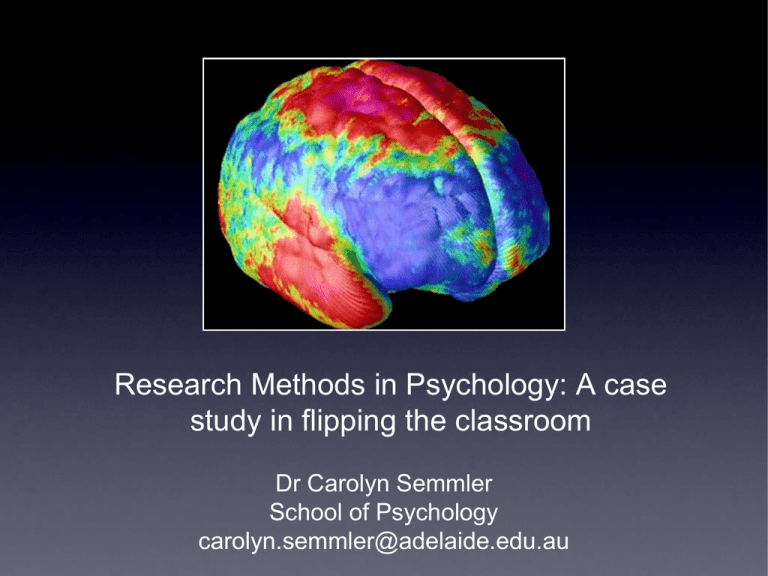
Research Methods in Psychology: A case study in flipping the classroom Dr Carolyn Semmler School of Psychology carolyn.semmler@adelaide.edu.au The context • 400+ students • Research Methods in Psychology (semester 2 2012) • "squashed" curriculum mandated by APAC • Poor intro from futureSACE • Diverse interests/degrees Teaching Philosophy • People learn best by APPLYING concepts • Pre-loading content allows times for GUIDED learning • Interaction with PEERS builds confidence and promotes support structures for students Resources • Four enthusiastic academics • A supportive Head of School • Adobe Presenter and the Learning Technologies Team • Time (approx 3 months per module) • Sessional teaching staff x 2 Course Structure Preload on Content Lecture before class Debrief on responses to activities Hands-on Group-based Activity "By the middle of this century, our minds might have become infantilised - characterised by short attention spans, inability to empathise and a shaky sense of identity..." • "Are social media and the internet making young people into uncaring psychopaths with short attention spans?" ? Assessment • Followed principle of APPLICATION over RECITATION MCQ quizzes - 2 versions Formative: feedback on each item and could be completed as many times as they liked Summative: for points Research Participation: not just for points but to illustrate key concepts in design, ethics and measurement. Positive Feedback from Students It is fantastic that we do the lectures at home first, and then spend our on-campus time engaged in meaningful, enjoyable activities that apply concepts, and a fun experience....Spread the word! Group participation helped me generate new ideas. Talking/discussing in lectures so we're not just being given the answers all the time is great...it is really useful for practical stuff -> not just in the classroom learning but it really challenges you to think! Barriers to Participation The big lectures are too big, I'm not comfortable responding to such a big group. Smaller tute groups would be better... The interactiveness was good however the large class size make interaction "in lecture difficult, because it is intimidating Instead of practical exercises during the lecture (give us) tutorials (more feedback possible)... Potential Solutions • Real-time chat/discussion tool that is easily displayed (votapedia is too broad). • Edmodo :Easy, quick and responses could be moderated, filtered and summarised for quick feedback. Barriers to Participation I think the lecture and working time could have been completed in an hour. My group went through the questions quickly and found we had a lot of time to spare... Shorter activity time or more activities to fill in the time.... Too much time for a few activities, left us sitting around for more instructions for ages... Potential Solutions • Provide extension activities • Monitor completion more effectively so feedback can be given when most groups are done (need to balance this against the needs of students working at a slower pace) • Make activities more self directed, no need for more instructions throughout the task Active Learning Classrooms at Magill University http://www.mcgill.ca/tls/spaces/alc Before you "flip" • How will I address the concerns of students who do not work well in groups? • How will I pace the in-lecture activities to ensure everyone is kept "on task" ? • How will I link assessment processes to the activities? • What is the best physical space for the course to be held in? Lessons Learned • Takes significantly more time to prepare and deliver content in "flipped" mode • Improvements are incremental and year-on year • Need to be aware of the needs of socially anxious students Thanks!
